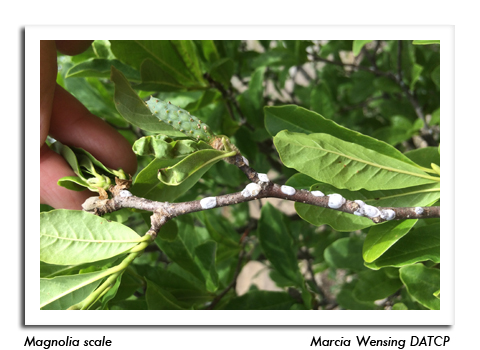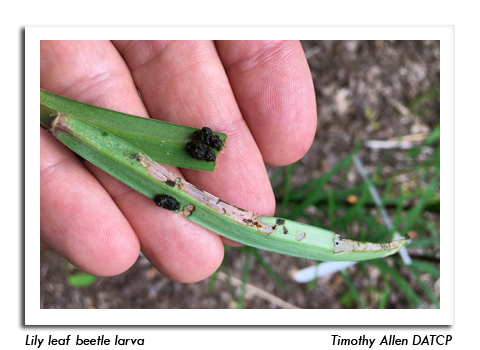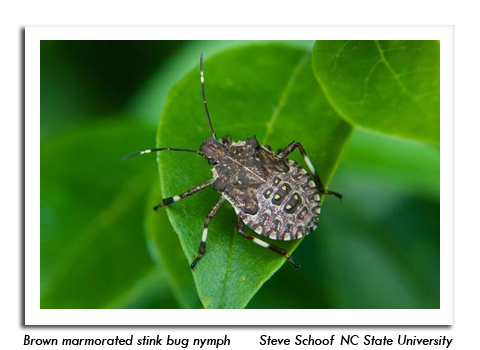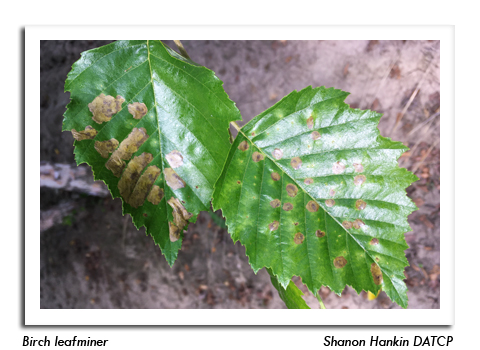
 |
|
|
Nursery & Forest
Volume 65 Number 14 Date 08/06/2020 MAGNOLIA SCALE - Adult scales were found on a variety of magnolia trees at nurseries in Racine and Waukesha counties. The mature stage of the scale is becoming more apparent as the wax of the nymphs fade. Late August to early September is the recommended time to treat the newly hatched crawlers; proper timing of the application is critical. If warranted, horticultural oils, systemic insecticides, or insect growth regulators labeled specifically for soft scales should target the crawler stage. Soaps can be effective against the immatures, but usually have little effect on the adults. LILY LEAF BEETLE - Nursery inspectors observed larvae of this relatively new invasive pest in Vilas County on Asiatic lily. The adult beetles are bright red and conspicuous, while the larvae can be found by inspecting lily leaves for defoliation. Leaf feeding by LLB larvae may become severe and, without intervention, will eventually kill the plant. BROWN MARMORATED STINK BUG - A third-instar nymph was found at a nursery grower on 'Ann' magnolia in Dane County. It was unclear if the nymph was using magnolia as a host, but it is a possibility given BMSB's very broad host range. While BMSB is considered a serious emerging threat to Wisconsin field, fruit and vegetable crops, it's potential to damage nursery stock remains unknown. Nursery managers and homeowners who suspect BMSB are encourage to send a photo or physical sample to PJ Liesch pliesch@wisc.edu at the UW-Madison Insect Diagnostic Lab. BIRCH LEAFMINER - River birch trees at a nursery grower in Dane County were exhibiting the noticeable blotches associated with this leaf-mining sawfly. The larval stages of the birch leafminer feed between upper and lower leaf surfaces, causing brown blotchy mines to form in the leaves as they mature. Heavy infestations may lead to noticeable defoliation and leaf drop, but the mortality risk is low and chemical control is rarely warranted. Additionally, river birch trees are less susceptible to birch leafminer than are other birch species. JAPANESE BEETLE - Nursery operators and homeowners continue to report damage to linden trees, roses, and numerous other ornamental plants. Adequate soil moisture levels favored grub survival from last season and may be one of the factors contributing to the localized outbreaks this season. Peak emergence has occurred in most areas and populations should begin to decline by the end of the month. DOGWOOD SAWFLY - Larvae were observed on the foliage of redosier dogwoods in La Crosse County. At this time of year, defoliation has usually progressed to the point that most leaf tissue has been fully consumed and only the midvein remains. Chemical control is effective against early-instar larvae (less than ¾ inch), but that treatment window has closed for this season. Varieties most susceptible to sawfly infestation are the gray and redosier dogwoods. -- Krista Hamilton, DATCP Entomologist 



.jpg)

|
|
|